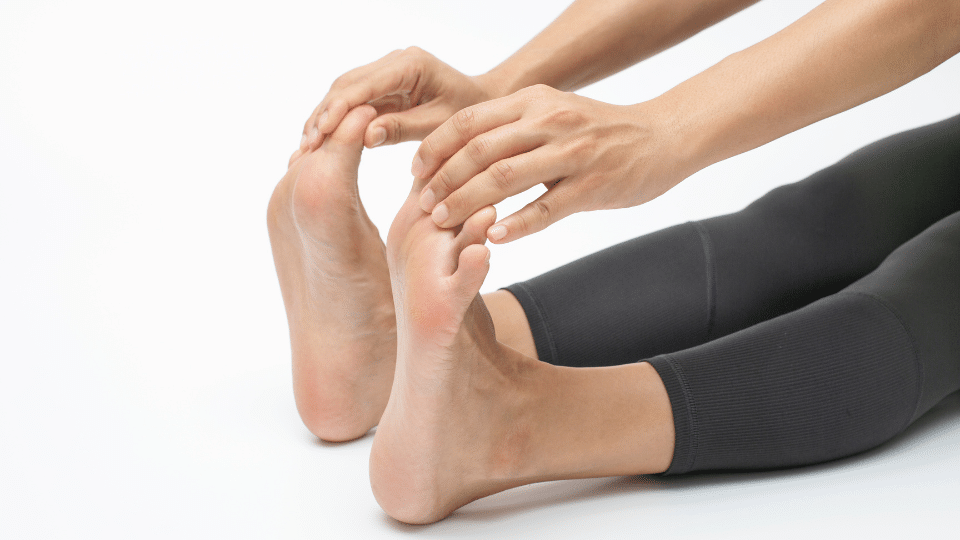Plantar fasciitis is a common condition that causes pain in the heel and the bottom of the foot. However, did you know that plantar fasciitis can also cause ankle pain? Many people experience ankle discomfort as a result of plantar fasciitis, though they may not immediately realize the connection.
When the plantar fascia, the thick band of tissue that runs along the bottom of your foot, becomes inflamed, it can affect the way you walk and shift the weight distribution in your feet. This altered gait can, in turn, put extra strain on your ankles, leading to pain and discomfort.
In this article, we will explore the anatomical connection between these two conditions and discuss how they can impact your overall foot and ankle health.
How Plantar Fasciitis Leads to Ankle Pain
Plantar fasciitis occurs when the plantar fascia becomes overstretched or injured, typically due to overuse, poor footwear, or biomechanical imbalances. While the most common symptom of plantar fasciitis is heel pain, the condition can also lead to ankle pain for several reasons:
Altered Gait and Posture
When the plantar fascia is inflamed, it can cause pain and stiffness in the heel. To avoid this discomfort, people often change the way they walk, leading to an altered gait. This change in posture can put undue stress on the ankle joint, resulting in pain in the ankles over time.
For example, if you are favoring one foot to avoid putting weight on the painful heel, the uninjured ankle may take on more load, leading to ankle strain.
Overcompensating Muscles
As your body adapts to the discomfort caused by plantar fasciitis, muscles in the foot, lower leg, and even the ankle will overcompensate. This can lead to muscle imbalances and joint stiffness, which may cause discomfort in the ankle area.
Tight Achilles Tendon
One of the most common contributing factors to ankle pain caused by plantar fasciitis is a tight Achilles tendon. The Achilles tendon connects the calf muscle to the heel bone, and tightness in this tendon can increase the pressure on the plantar fascia, leading to both heel and ankle pain.
When the Achilles tendon is tight, it can also limit the range of motion in the ankle joint, further exacerbating the discomfort and pain.

Symptoms: How to Identify Plantar Fasciitis and Ankle Pain
The symptoms of plantar fasciitis and ankle pain can often overlap, making it important to recognize both conditions. Here’s how you can distinguish between the two:
Plantar Fasciitis Symptoms:
- Heel pain that’s sharp and stabbing, especially in the morning or after prolonged periods of rest.
- Pain that decreases as you move but may return after long periods of standing or walking.
- Swelling or tenderness at the bottom of the foot near the heel.
Ankle Pain Symptoms:
- Dull or sharp pain in the ankle, often aggravated by physical activity or walking.
- Swelling or stiffness in the ankle joint.
- Limited range of motion or difficulty with activities like running, climbing stairs, or walking.
If you experience both heel pain and ankle discomfort, it’s crucial to address both conditions together to ensure a full recovery. If you’re unsure whether it’s time to seek professional care, you can review some of the common signs that indicate you should see a specialist. For more information, check out our Signs You Need to See a Foot and Ankle Specialist blog.
Solutions: How to Treat Plantar Fasciitis and Ankle Pain
Managing both plantar fasciitis and ankle pain involves addressing the root cause of the issue and providing relief for both conditions. Here are some effective strategies for treatment:
Rest and Foot Elevation
Rest is essential for allowing the plantar fascia to heal. Elevating the foot can help reduce swelling in both the heel and ankle. Avoid high-impact activities until the pain subsides, and use ice packs to reduce inflammation.
Stretching and Strengthening Exercises
To improve flexibility and reduce pain, gentle stretching of the Achilles tendon and plantar fascia is highly beneficial. Exercises that strengthen the ankles, feet, and lower legs can help support your body weight more evenly and improve foot mechanics.
Here are some exercises to try:
- Achilles tendon stretches: Stand with your hands on a wall and one foot behind you. Gently bend the front knee while keeping the back leg straight to stretch the Achilles tendon.
- Plantar fascia stretch: Sit with your legs extended and use a towel or strap to pull your toes toward you, stretching the bottom of your foot.
Footwear and Orthotics
Wearing shoes with proper arch support and cushioning can relieve pressure on the plantar fascia and help prevent further injury to the ankle. For extra support, custom orthotics can be beneficial for both plantar fasciitis and ankle pain. Orthotics help maintain the proper alignment of the foot and ankle, reducing strain and improving posture.
For more information on custom orthotics and their benefits, check out our Custom Orthotics: The Key to Foot Comfort and Mobility page.
Physical Therapy
A physical therapist can help develop a personalized rehabilitation plan to address both ankle pain and plantar fasciitis. They can guide you through specific exercises, provide techniques for improving foot mechanics, and help you strengthen the muscles around the affected areas.
Medical Intervention
In some cases, when conservative treatments do not provide relief, a podiatrist may recommend medical interventions, such as:
- Corticosteroid injections for reducing inflammation.
- Night splints to stretch the foot and reduce pain during sleep.
- Surgery (in rare cases) to correct severe cases of plantar fasciitis or ankle deformities.
When to See a Podiatrist for Plantar Fasciitis and Ankle Pain
If you’re experiencing persistent foot pain or ankle pain, it’s important to consult a podiatrist for an accurate diagnosis and appropriate treatment. A podiatrist will assess your condition and recommend the best course of action based on your specific needs.
At Fall Creek Foot & Ankle, we specialize in diagnosing and treating foot and ankle conditions, including plantar fasciitis and the resulting ankle pain.
Contact us today to schedule an appointment and get personalized care for your foot and ankle pain.
